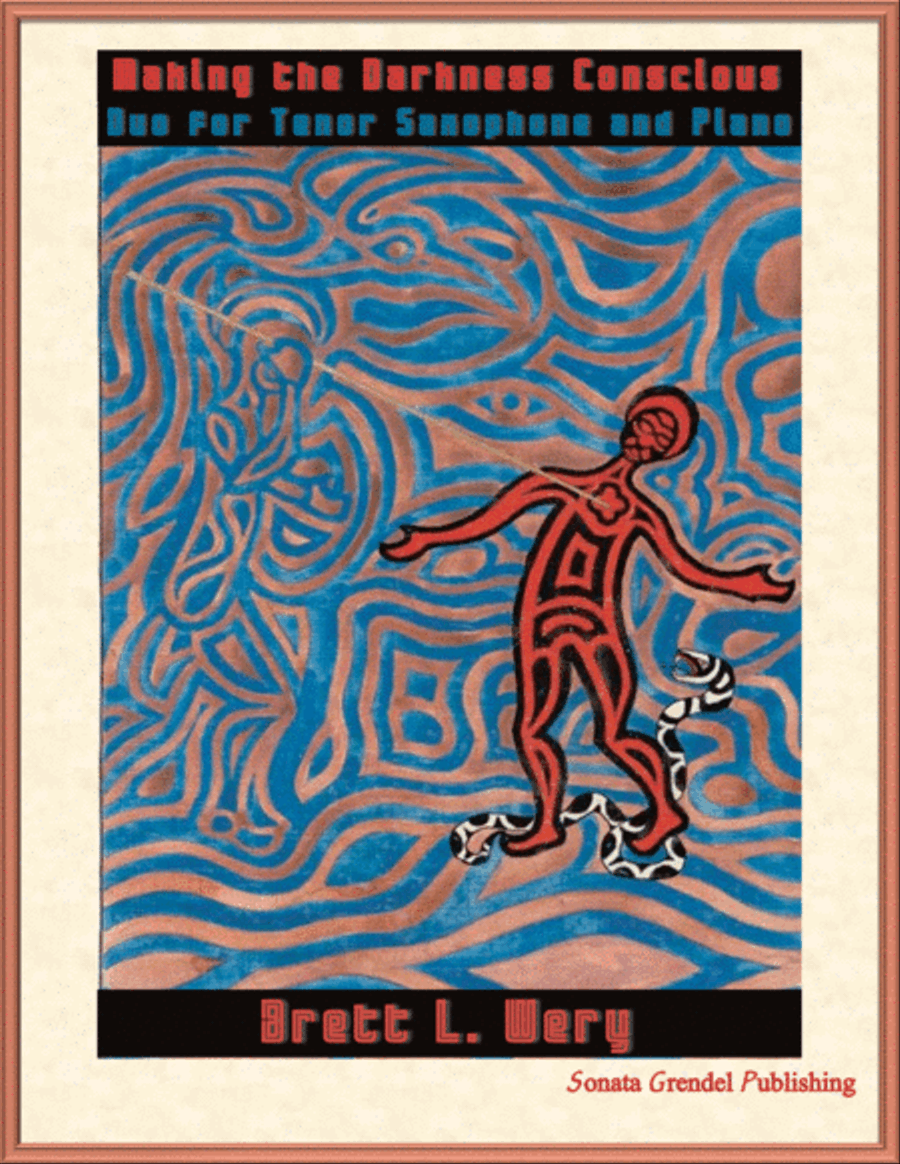Instrumental Duet Instrumental Duet,Piano,Tenor Saxophone - Level 5 - Digital Download SKU: A0.837493 Composed by Brett L. Wery. Concert,Contemporary. Score and parts. 38 pages. Sonata Grendel Publishing #5741825. Published by Sonata Grendel Publishing (A0.837493). Making the Darkness Conscious was commissioned by my friend, Jonathan Hulting-Cohen. Jonathan is the Professor of Saxophone at the University of Massachusetts, Amherst. He is an amazing artist and a technical wizard. The piece was premiered in its original version as a solo for tenor saxophone and wind ensemble. The present version for piano is not intended to be a reduction of the wind ensemble accompaniment but is a reworking of the piece as an addition to the saxophone/piano duo repertoire. The anti-heroes in film, TV, and literature who feel themselves pushed to do very bad things for very noble reasons inspired this sonata in one movement. These characters often are themselves corrupted by their efforts. One trope of scripted television anti-hero vehicles like Breaking Bad is the cold opening presented out of sequence. The main character is shown in the moment of highest tension or deepest desperation then the story backs up to explain the events that led to that moment. Making the Darkness Conscious uses the same device by starting with a mysterious, disoriented setting full of strange groans and weird echoes. The scene ends in a terrified scream and cuts directly to a happier, jolly portrayal of the solo tenor saxophone’s character. By the end of the piece, the soloist’s character is transformed into something more ruthless and tortured. One does not become enlightened by imagining figures of light, but by making the darkness conscious. The latter procedure, however, is disagreeable and therefore not popular. C.G. Jung
